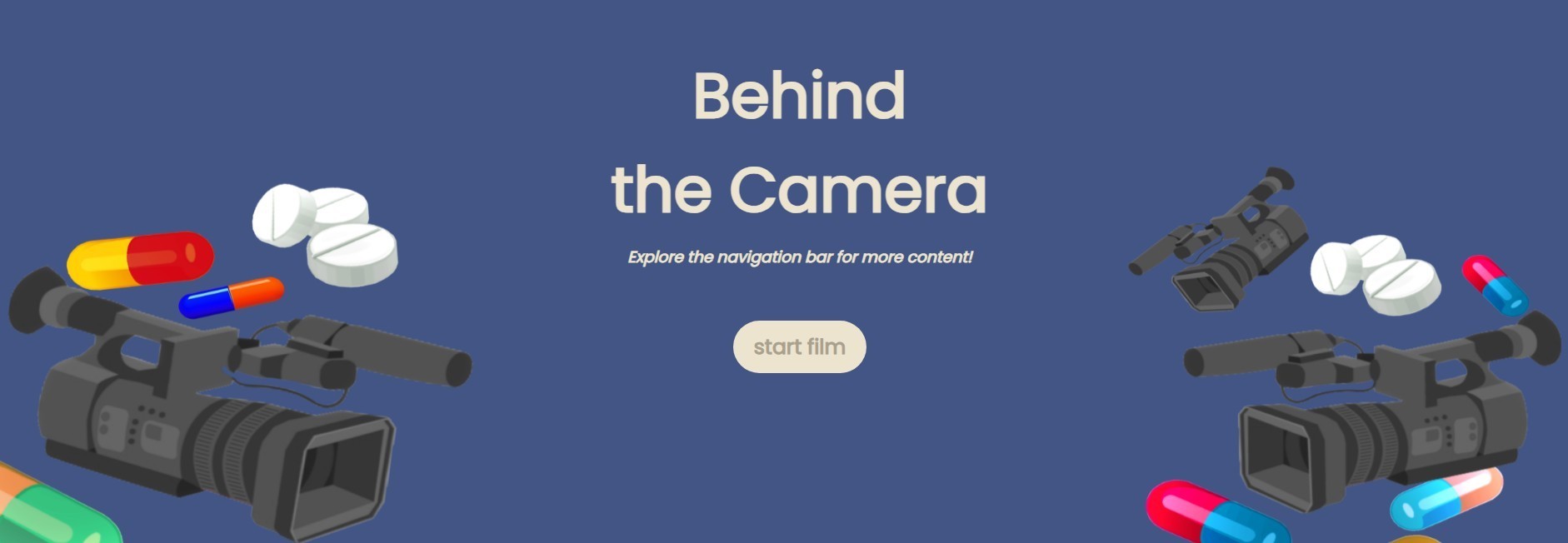
Behind the Camera
Synopsis
In the captivating interactive film Behind the Camera, the once ordinary daily life of a student takes a mysterious turn when he becomes convinced that someone is following him. As he goes about his usual routine, he becomes increasingly aware of bizarre happenings, such as objects mysteriously appearing, instances of gaslighting that leave him questioning his own sanity, and an uncanny sensation of being constantly observed. Will he be able to maintain his sanity amidst unsettling incidents, or will he be driven to delve deeper into the enigmatic forces that are fueling his mounting paranoia?
Storyline
Composed of five acts and fifteen scenes, the storyline follows the life of an unnamed main character and his attempts to uncover the mystery behind his sudden paranoia. The first, second, and third acts consist of the main character carrying out his routine, such as waking up, having breakfast, and walking around campus. However, as each act progresses, we begin to observe unusual occurrences around him.
Due to objects seemingly appearing and an abnormal sense of being followed, the main character starts to become paranoid, eventually going to a therapist which prompts the fourth act. The therapist prescribes medicine for his delusions, and he goes back to his dorm to choose between taking the medicine or refusing. In the fifth act, if the viewer chooses to take the medicine, the main character carries on with his life as if nothing happened, only for it to be revealed at the end that there was indeed a stalker with a camera, which happened to be the therapist. However, if the viewer refuses to take the medicine, the main character ends up discovering an extra package of medicine under his pillow, forcing him to confront the therapist. After a heated argument, the viewer has the option to choose between shooting or beating the therapist, who also reveals herself to be a camera in what appears to be a delusional event. Both options result in the same ending of the main character being arrested and two police officers concluding that he had a psychosis episode and attacked a camera.
When it comes to the storyline writing, brainstorming resulted in different approaches. At first, the idea was to depict a day in the life video of the main character, while a catastrophic event would be occurring in the background without him noticing. However, after further thought, the storyline of the character being stalked was settled, taking unintentional inspiration from The Truman Show for the general concept, and “Mexican Standoff” from Key and Peele for the therapist scenes.
Filming and Editing
Filming took place over the course of two sessions. In the first session, the actors rehearsed the script and performed it a few times before the official recording in four different takes on a BlackMagic Pocket Camera. In the second session, the team members experimented with different environments, sound effects, and camera angles before deciding on the final mood for the film as a whole.
The BlackMagic Pocket Camera allowed for the scenes shot to amplify the overall mood of the film. However, the audio was not as clear filming with the camera alone, which is why a separate iPhone microphone was used as a replacement. The audio was then merged into the video using the editing software, Da Vinci Resolve 18.
The process consisted of several steps before reaching the final product, which includes linking clips chronologically, while simultaneously syncing the voice of the recordings. After the dialogue was tuned, the voices were consistent with the content of the video. To improve the visuals of the film, colour grading was applied, which helped get rid of the glare from the lights while filming.
Web Development and Interactivity
The website used the home, people, information, and film icon on the landing page from Font Awesome [5]. It was used to help enhance the overall look and experience of the website and the user, contributing to the creation of a comprehensive website for users. The website also used personal designs to create a sense of livelihood on the page. This makes the website design and layout more original and unique as these images are specifically designed for the film in mind.
The website was built using basic HTML, CSS and Java Script code to help showcase the film and behind the scenes clips and videos. With the use of this code, interactivity was added to the website. The navigation bar highlighting when you hover over it and the slight movement of the drawings on the landing page, for example, help make the website more interactive for users and enhance overall user-experience. The original drawings also added more depth to the site by strategically considering the topography, landscaping, and functional layout.
With several elements being changed such as the fonts used and layout of the site as a whole, the site was created so that the user is ensured a smooth experience through the website. After experimenting with a wide range of format and layouts, the final published website utilized an efficient and user-friendly format. With subtle interactive elements and simple yet sophisticated shades of different blues with one beige color as a contrast, a user’s experience is enhanced and ensures that they enjoy the film without being overwhelmed by flashy colors or a disorganized layout.
One interactive aspect of the website is the “pick and choose” option after each video clip is played. This is why the film was divided into smaller sections based on the plot and then was ensured to have two or more choices pop up each time the clip is done playing. This allows the user to make a decision between the options and navigate the plot with more freedom and autonomy, which displays the image.
Scenes from Video
A key pattern that was considered throughout the filming process was the repetitive routines of the main character. The introduction to subtle modifications to these routines, such as the alterations in the background music, the main character’s demeanour and facial expressions, props, and his frantic movements, signified a gradual distortion of reality. This alteration amplified the paranoia experienced by the main character as his days progressed. The film reaches its climax during the confrontation between the main character and the “therapist.” In the scene, the conflict is articulated to the viewer, with the main character no longer attempting to evade the unsettling feeling that has been plaguing him.
The final two scenes options are significant to the plot. In one scene, the therapist reveals herself as the individual who has been observing and photographing the main character all along. In the other scene, the phone is unveiled as the therapist, adding an unexpected layer to the story.
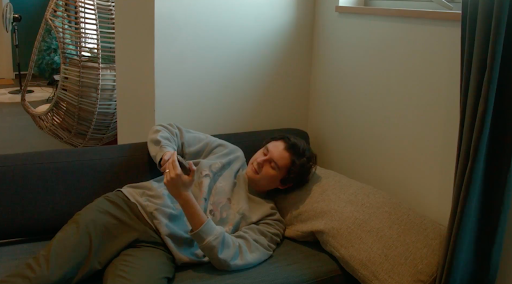
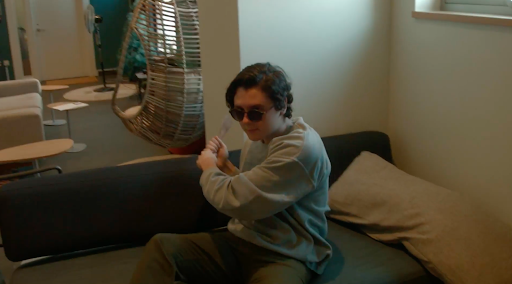
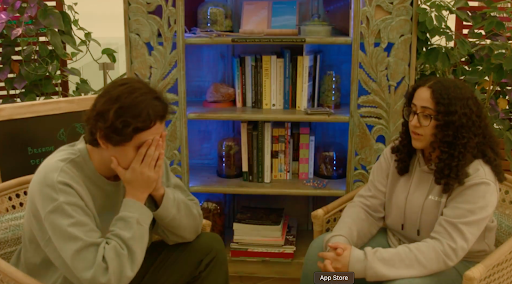
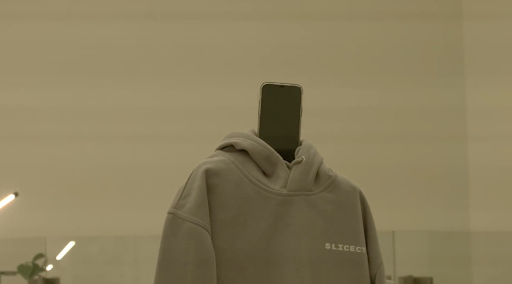
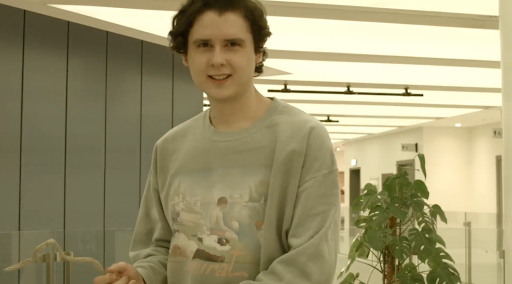
Reflection
Filming proved to be the most difficult part of the filming process, particularly when it came to details such as sound and camera angles. It was difficult to find the right angles for every scene because it was harder to decide which frames looked good than it seemed at first. It took a lot of effort and experimentation to perfect the camera movements, direction changes, and zooming in and out in order to get both the actor and the background at visually pleasing positions.
Managing sound during filming presented another challenge. The location in which the filming took place had a noisy environment, with numerous people passing by and engaging in background conversations. This made it difficult to complete scenes in a single take due to excessive background noise, leading to the adoption of a separate phone recorder exclusively for capturing dialogues. Aside from these filming challenges, the procedures of developing and completing the script and storyboard, organising filming times, designing websites, and coding the websites all went off without notable difficulties. Consensus prevailed in decision-making throughout, minimising conflicts in the overall process.
In the future, there is an interest in exploring filming with a newer camera, which features better film quality, as the camera used exhibited a yellowish filter and displayed lines or waves, lacking a clear, smooth lens or filter. There is also a desire to capture more detailed shots and incorporate additional decision points for users to influence the plot’s progression.
Team Members
Aysha AlMheiri
- Team Leader
- Lead Web Developer and Designer
- Actor
- Director
Clara Juong
- Web Developer and Designer
- Actor
- Videographer
Victor Nadu
- Script Writer
- Actor
Lujain Elmallah
- Editor
- Actor
Ghada Madani
- Illustrator
- Producer
For the class “Communications Lab”.